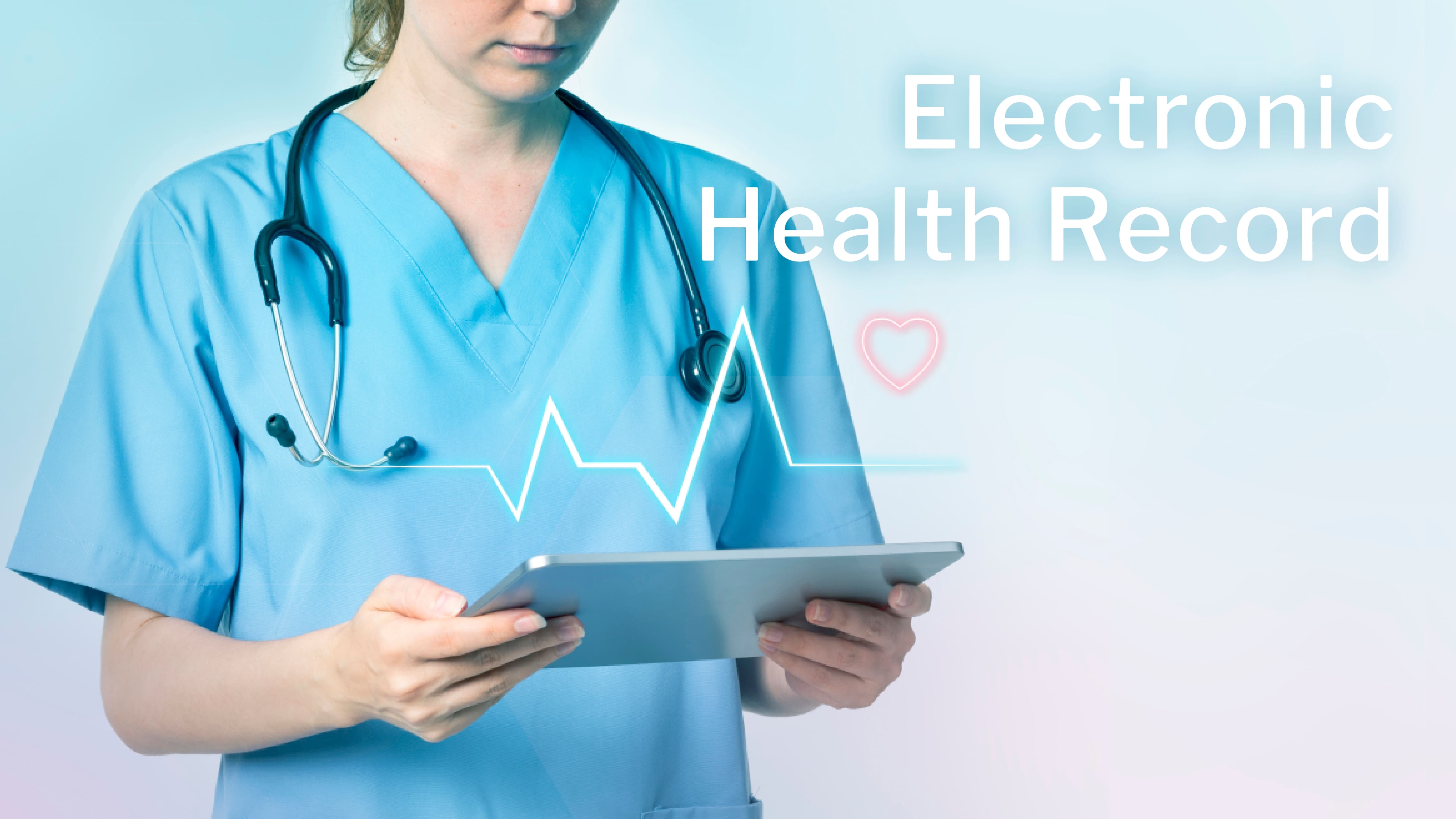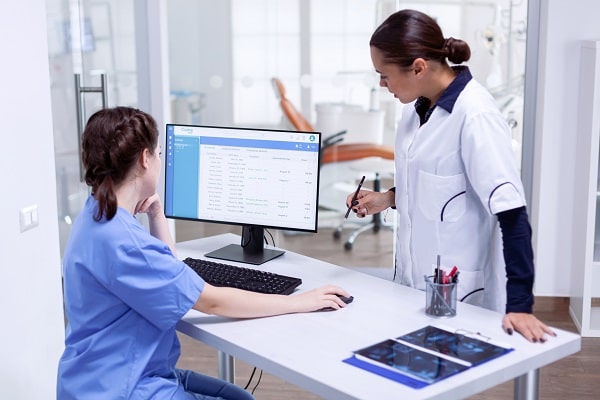Key differences between EMR and EHR
The health industry is one of the oldest surviving industries, and one of the most crucial industries that we have today, if not the most important sector. Our health, both physical and mental, is an asset to all of us, and it is to preserve our mental and physical health and alleviate any other illnesses associated with the same that we connect to doctors and medical professionals via the healthcare units and practices.
These practices, in order to treat the patients, first need to know about them and record their data including their basic details like their name, address, and telephone number and other personal details like the record of thor illnesses, doctor prescriptions, medicines, and more in the form of EHR or EMR tools, which can be expanded to Electronic Health Record and Electronic Medical Record tools.

The Emergence of the Digital Era and the Growth of the Electronic Health Record Systems and Electronic Medical Records Software!
The digital age is what we are living in and in this digital era, everything is ought to be digital to make things easy and effective and to help us keep pace with things and at the speed at which they are changing. Regardless of the industry you look at, the emergence of digitalization is prominent and the same has left a mark. The same goes for the healthcare industry, which has witnessed a massive change and is still undergoing huge transformations on a daily basis due to the digital age.
The gift of digitalization has not only improved the patients' service, overall experience, and satisfaction but also made the practices decent and workable places for the medical staff and enhanced the overall quality of healthcare. Many digital innovations, new-age software, and technology have come together to bring this fruitful change to the medical industry for good and here patient health information recording tools like the EHR and EMR are readily coming in handy for the providers.
Along with the digitalization of the appointment process, check-in, intake, payment process, followups, and others, the method of keeping the patient health and medical records has also been online.
Recent research reports have found that over 75% of the patients are willing to go online to view their medical records, and around 76% of them are willing to view their test results via the EHR and EMR tools. It is for these reasons that more and more medical practices of now are opting for these software/tools and making them a part of their digital process. However, if you are unaware of what actually these processes are and how they are helping the practices better their healthcare, then stay glued because we will cover all of them here in this article ahead.
What is EHR and How Does it Work?
The Electronic Health Record (EHR) can be defined as a digital version of the patients' health records. An EHR will consist of all of the data that we can usually find in a paper chart along with numerous additions. The EHR is designed to be shared with the other providers as well. This helps the authorized users to access the EHR of a patient easily and immediately and then take adequate action without any unnecessary delays. The providers who can access the patient's health records can range from a wide range of specialties but they should be authorized to view the same.
Electronic health records can include the medical history of the patients, medications, diagnoses, vital signs, allergies, immunization, lab data, imaging reports, progress notes, and more. Furthermore, an EHR can also contain other relevant information, like the insurance information of the patients, and their demographic data, and sometimes, they also reflect any other data that might have been imported from their personal wellness devices.
The EHR is empowered by the way it works, which instantly makes data available to the authorized providers across several disciplines of medical practice and beyond, thereby helping in making coordinated care possible. Labs, imaging facilities, specialists, emergency facilities, pharmacies, and school and workplace clinics are some of the clinicians and organizations involved in the healthcare industry with whom an EHR can be shared with.
Some of the advantages of EHRs are:
What is EMR and How Does it Work?
Electronic Medical Records can be defined as the patient's chart of a single practice, which is presented digitally. The EMR includes the medical history of the patients, their treatment, and diagnosis by a physician, nurse, dentist, surgeon, or the practice. The Electronic Medical Record can sum up everything that is found in a paper chart, including the medical history of the patients, their medications and diagnosis, dates of immunization, and more.
The EMRs in contradiction to the EHRs, work well within a particular practice, and so they are quite limited and don't really operate outside of the practices. Here, if another provider needs to see the patients' health records then it won't be possible digitally via the EMRs. In this case, a particular practice need to get the medical records of the patients printed out and mailed for another provider to go through them.
The EMRs have several advantages that distinguish them from the paper records that were earlier used. Some of these benefits include:
Are EHR and EMR the same?
Though the EHR and EMR are often used interchangeably as words, these tools are quite different from each other. If we look at their spellings, 'medical' and 'health' records appear different. Not only spelling-wise but the Electronic Health Records and Electronic Medical Records software are also different in various other aspects as well.
What are the key differences between EHR and EMR Software?
The EHR and EMR software are different from each other, as we mentioned before, on many fronts. Here's a list of points of difference between Electronic Medical Record systems and Electronic Health Record systems:
Contents
The Electronic Medical Record software is different from the Electronic Health Record in terms of the contents. While the EHR provides a more comprehensive view of the patients' records, the other (EMR) software offers a narrow view of the patients' medical history. Now, you need to choose whether you will need an EHR or EMR software based on your requirements. However, if you find any problems with integration between your EHR/EMR or patient management software, then no need to worry now with the 24/7 support and assistance that GrowPractice offers even in integration issues between your third-party software and the medical office software and systems provided by GrowPractice.
Sharing
The EHR software, which offers a comprehensive outlook of the patients' health records, are designed to be shared, and thus, can be shared easily with the staff and other providers as well that are authorized from more than one organization in the same digital format. However, when it comes to the EMR software, then the data of these software cannot be shared digitally and needs to rather be printed out. The EMR software data can just be shared within a practice.
Patients can/cannot possess the data
The patients often check their data via the EHR and EMR software, and this is far more convenient can the earlier paper records. This is why the healthcare industry is going through a transformation in the way the patients' information is saved for future reference. However, even when it comes to the digital practices of storing the patients' medical and health data, not all the systems allow the patients' data to be possessed by the patients, who can then move with the data outside.
The EHR systems allow the patients to access their medical data and move with the same data outside of the premises. On the other hand, the EMR systems/software do not allow the patients to carry their medical/health-related data outside of a particular practice. If the data of the EMR software needs to be taken outside at any cost, then these data need to be printed out on paper to do so.
Uses of EHR and EMR software
The EHR systems, as they are more convenient and provide a thorough outlook of the patient's health and medical details, are deemed as tools that are effective for decision-making purposes. However, when it comes to the EMR software, then it is important to note that these tools are used by the providers mainly for treatment and diagnosis.
The Implementation of EHR and EMR Software and How they are Benefiting the Practices!
The EHR and EMR software can be deemed as one of the latest additions to the healthcare industry. These are among such tools that are bringing in a new age of digitalization in healthcare. The EMR and EHR implementation is something really essential for the healthcare practices today as is the medical office and patient management software and systems from GrowPractice.
Here are some of the major advantages that the EHR and EMR software and tools provide for the healthcare practices of today:
Ease recording the patients' medical data
The EHR and EMR software of today have been introducing a revolutionary new method to record the medical data of the patients. The patients' data, which were earlier recorded manually, are now done digitally without any hassles. These software thus eases the recording of the medical data of the patients.
Ease of sharing the medical data
The sharing of the medical data was really difficult earlier when they used to be on bulky files that needed to be printed or carried from place to place. However, with the advent of the convenient EHR and EMR software, the patients' data are available in digital form, which can even be shared and moved outside.
Help gain more insights and diagnose effectively
The EHR and EMR software helps the practices gain more insights into the patients' records effectively. These tools today contain all of the relevant patient-specific data digitally, which helps the practices stay aware of the critical conditions of the patients as well, thereby improving the diagnostic process in general.
Reduction of medical errors
As per recent surveys, 80% of all medical bills and over 50% of the medicare claims contain errors, which makes situations difficult for both the patients and the practices, even risking the practice's reputation in certain instances. Medical errors often put an indelible mark on the reputation of the medical practices and go a long way toward influencing the overall patient experience and the satisfaction ratings of the patients.
Improve the prescribing
Prescribing patients has now been easier than ever before. Besides, the EHR and EMR software greatly enhances the prescriptions of the physicians because they simply provide detailed, clearer, and error-free insights for the physicians.
Reduce the time taken for the staff
The medical staffs and workers are often prone to huge work pressure and overburdening issues. Besides, with the outbreak of the Covid-19 disease, the medical staffs are far more overburdened than they were ever before. A recent survey has noted that over 18% of the medical staff has resigned from their duties, and this resigning of the medical workforce is putting massive pressure on the practices. However, automatizing the practice workflow has been proven to give a new gear for the medical workers to work with a renewed vigor and the EHR and EMR software are helping this become possible lately.
Aside from all these benefits that the EHR and EMR software, these tools are proving to be really helpful for the practices in numerous other ways too.
GrowPractice Mitigates the EHR/EMR Implementation Issues and Other Issues Associated with These Software!
The EHR and EMR software are used by a majority of the practices simply because they are way more convenient to use and help keep the patients' data secure. Now, if you are worried about how to use the EHR/EMR software, then don't worry because GrowPractice all the problems that might exist with the usage and integration of the EHR/EMR/PM software with its easy integrative medical office software, systems, and solutions.
What is more important to note is that the EHR and EMR tools are really loved by the patients today so much so that more and more practices are adopting these tools, helping the adoption rate of these software to be higher than 89%, as was noted recently by experts.
You can certainly use the EMR and EHR software for your practice to have an edge over your competitors and rivals. Furthermore, with the medical office software and systems from GrowPractice, your practice management, and patient management would be smooth, easy, and effective and will help your practice grow in terms of the patients it sees and the revenues that come. Here are some of the prominent benefits that GrowPractice provides the practices of today:
The EMR and EHR implementation are less than a thing now for the practices and with trustworthy medical service providing solutions like GrowPractice, it is really easy and effective for the medical service providers. Trusted by numerous private medical offices/practices and urgent care organizations, GrowPractice's solutions are also trusted by several US Federal Government Agencies. So, don't wait back, hurry up and get your EMR and EHR software in place and secure them well with GrowPractice's advanced medical office solutions. Don't hesitate any more and start growing your practice to the dream levels with GrowPractice.



